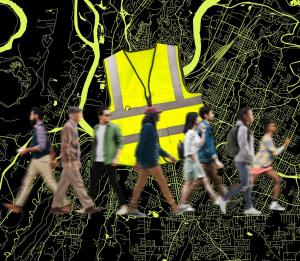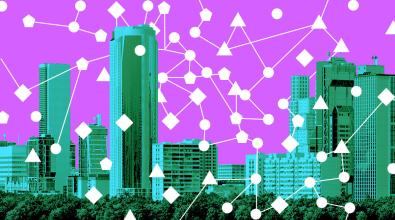 Read More
Read More
Prompt and prepared: Using AI to practice for the next crisis

Listen to This Article
Just as generative AI is becoming a powerful tool for city innovators brainstorming new solutions, it can also enhance their ability to anticipate risks—helping them simulate future scenarios and assess whether existing preparedness efforts are truly up to par.
Traditionally, government scenario planning has included tabletop exercises where leaders respond to predefined crisis scenarios. Civil servants might be asked to plan for a biohazard emergency on their transit system. What steps should subway operators take? How should a response team be mobilized? What information should be shared with the public—and when?
While this approach remains valuable, it doesn’t always keep pace with the evolving threats cities face, from extreme weather events to disinformation campaigns. That’s why a growing number of local leaders are experimenting with generative AI to enhance their preparedness. By creating more dynamic simulations, AI can help officials think through decisions, identify weak spots, and adjust responses in real time. It’s not a replacement for traditional planning, but another tool that allows city leaders to test a wider range of risks and responses—helping them stay flexible in the face of uncertainty.
Exploring the implications of—and fixes for—new scenarios.
For example, local leaders in Tarrant County, Texas, recently used genAI to explore how changes in funding could impact operations—and how the local government might respond. The team started by providing an org chart and details of its funding structure to genAI tools, then used the tools to project how certain programs could be restructured or combined to continue operating during a budget crunch, and what the ripple effects might be across local services.
“There's some things you can't plan for, but in our work and what we do, it gives us flexibility to consider more possibilities and more responses,” says Marguerite Allen, assistant director of community development in the county.
She notes that using genAI in this way opened up her eyes to how her team could design programs with financial stability in mind in the future. “It definitely increases the confidence level around decision-making,” Allen says.
Turning a brainstorming tool into a practice partner.
Michael Baskin, the former chief innovation officer of Chattanooga, Tenn., and now in the same role for Montgomery County, Md., has recently started working with city leaders nationwide to deploy AI as a “practice partner.” By this, he means that beyond using generative AI for administrative tasks and brainstorming, city leaders should also tap into its potential to run teams through simulated exercises—helping them practice and refine their responses to real-world scenarios. He describes this as the difference between using AI as an efficiency tool versus using it as a coach that actively strengthens decision-making and preparedness.
Baskin gives the example of a city preparing for a cybersecurity attack, where a mayor must quickly think through critical decisions. To initiate this kind of scenario, a city leader could use a generative AI platform with a simple prompt: “Run me through a scenario where a cybersecurity event takes down the entire city’s IT system.” The AI would then guide the exercise with follow-up prompts like, “What’s your immediate response?” or “How do you coordinate with state officials?”—forcing the leader to actively work through the crisis.
Unlike traditional readiness exercises, this approach allows leaders to iterate scenarios in real time and adapt as new challenges emerge. It also pushes them to confront responsibilities they might not typically consider—such as handling a direct call from the governor for an urgent update and deciding on-the-spot what to say.
Among the city leaders exploring this approach is Kate Parmelee, deputy city manager for strategic initiatives and innovation in Port St. Lucie, Fla. She believes that using the practice-partner training might have helped the city to be more prepared for last fall’s Hurricane Milton, which killed seven people in St. Lucie County.
“We had a major change in our typical storm scenario as the storm approached,” Parmelee tells Bloomberg Cities. “I think this method would have helped us adapt more quickly” in that critical moment.
Moving from “planning” to “prepared.”
A key takeaway for cities is that preparedness isn’t about having the perfect plan—it’s about uncovering gaps and learning from them. The real value lies in experiencing firsthand where a city and its staff aren’t fully ready and using those insights to improve.
Baskin points to the same hypothetical cybersecurity exercise, where a drill might reveal that a city needs to better coordinate its response across multiple teams—from its communications staff to regional officials to municipal bus drivers. This recognition—the need for broader collaboration—is a recurring theme in genAI-driven readiness work.
“These response muscles become more important when we talk about the collective, when we talk about teams, and so the ultimate focus might be: How do we make decisions under pressure together?” Baskin says. “Those are the types of things that begin to make this powerful, because you're doing it both as an individual, as a team, and as an organization.”

